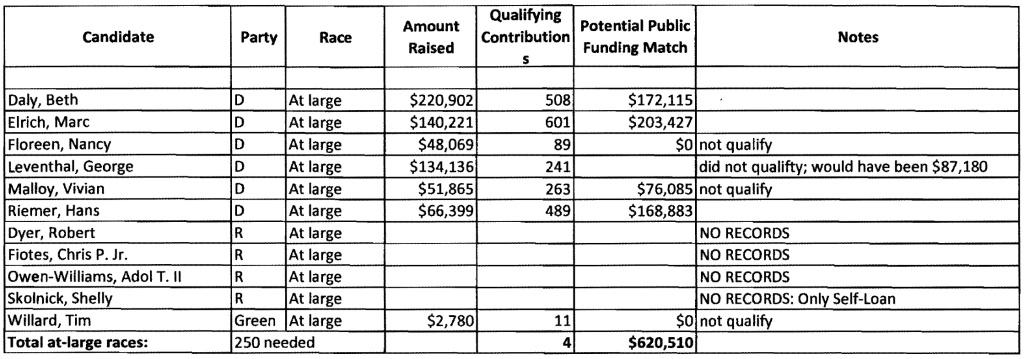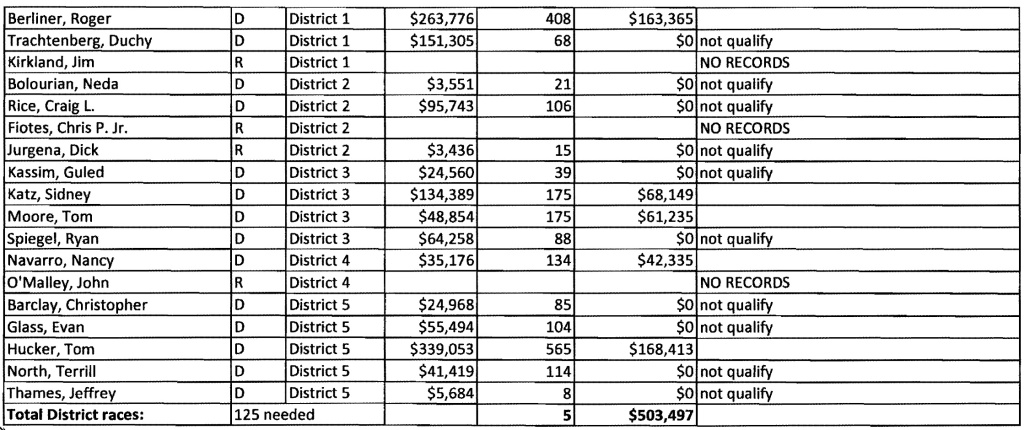Common Cause MD has issued a press release that the Montgomery County Council has approved public financing for County elections. I’ll let you know of any major changes to the bill as I find out. But for now here is Common Cause’s statement:
Rockville, MD – The Montgomery County Council today took a huge step forward for fair elections by passing with a unanimous vote Bill 16-14, creating a program for county council and executive campaigns that would fight big money interests by empowering small donors in County elections.
“Voters expect public officials to make decisions that advance the public interest. But the hard truth is that special interests too often get special attention from candidates and officeholders,” said Jennifer Bevan-Dangel, Executive Director of Common Cause Maryland. “Voluntary small donor, public financing systems like the one before the Montgomery County Council on Tuesday put big ideas, not big money, at the center of our elections and make it possible for people of modest means and lacking connections to established power structures to run and win elections. We are thrilled that Montgomery County is leading Maryland forward. The amendments added today only strengthened the bill, and this is truly a model piece of legislation for other jurisdictions to follow.”
“Montgomery County is the most populated jurisdiction in the state, home to one million people. Its total budget is nearly the same size as Los Angeles. Because of the County’s influence in Maryland and proximity to Washington, D.C., the passage of public financing here will reverberate across the state and the country!” said Kate Planco Waybright, Executive Director of Progressive Maryland.
Nick Nyhart, President & CEO of Public Campaign, said “Today, the Montgomery County Council stood up to big money politics. Their vote to raise up the voices of everyday people in politics is part of a growing movement of millions of Americans fighting for a democracy that’s truly of, by, and for the people.”
“In our democracy, the depth of your pocket should not determine the volume of your voice,” said Maryland PIRG Director Emily Scarr, “In the face of ever increasing election spending by mega-donors and corporations, the Montgomery County Council took a big step today by tilting the balance of power back to ordinary citizens. More of our counties should quickly follow suit.”
Under the Fair Elections program, candidates for County Council or County Executive who agree to limit their fundraising by accepting only low-dollar donations from individual donors in their districts will qualify for matching funds.In jurisdictions from Hawaii to Connecticut, such small donor-based Fair Elections reform have improved the election process. The programs encourage prospective candidates traditionally shut out of the political process, including people of color and of modest means or those who lack connections to established sources of political power, to run for office. They make politics more competititv and stimulate more substantive legislative debates.
The Fair Elections Maryland Coalition is working to implement this important reform in other counties and in contests for the state legislature.



